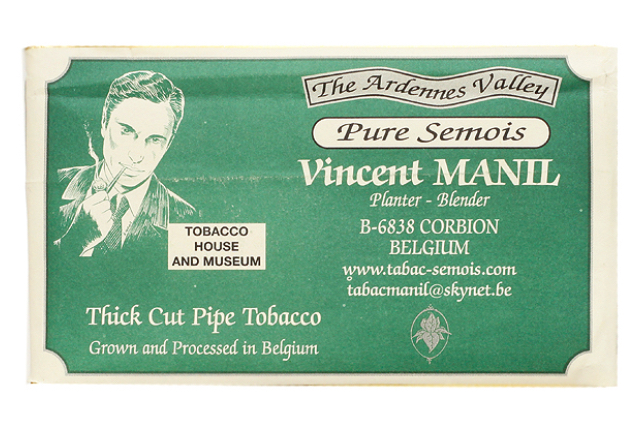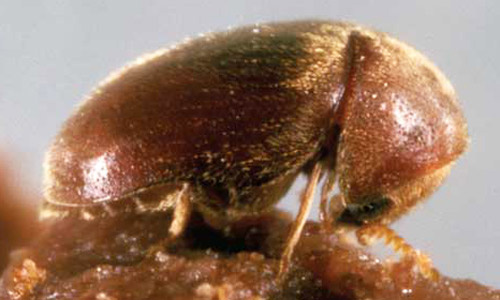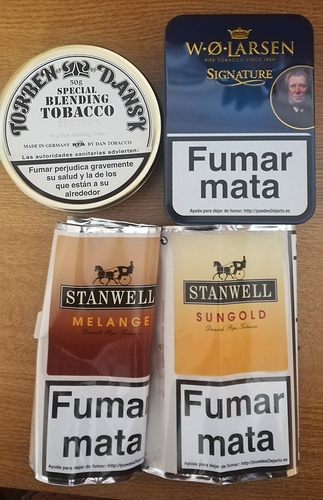Have you tried adding some DNB or Tobacco Absolute? Inawera has some great ones, they might just add that little something that’s lacking.
Yay you! ![]()
But, as R-K asks, would you mind giving us a list of the tobacco used in the extractions you’ve performed? This will be helpful info for us. Then, possibly, we can give you the info you need to get your NET where you want it. ![]()
These are the tobacco used. And also some cheap cigars … I made 30gr tobacco + 150ml PG approximately, 8 hours at 50 degrees Celsius, minimum 2 months of maceration, and then I mix it 50/50 between 15 and 25% … I don’t know if this is useful information…
Indeed… good info. 
Great! Give us some time to research theses tobaccos on a review site or two… knowing what type of leaf is in the blend can reveal a vast amount of info. 
Here’s one of the sites which I use to gather info about a tobacco or blend. Take the reviews from actual pipe smokers with a grain of salt… they are, after all, setting fire to the stuff and then inhaling burning leaves… using tobacco like that is not advisable! 
https://www.tobaccoreviews.com/blend/3464/torben-dansk-burley
https://www.tobaccoreviews.com/blend/2065/wo-larsen-signature-vintage-mixture
https://www.tobaccoreviews.com/blend/2978/stanwell-melange
https://www.tobaccoreviews.com/blend/11085/stanwell-housemark-sungold
Take a look and see what might be causing the sweetness. 
Pay particular attention to the listing/info for Cavendish. 
@Gus6 … If you can get your hands on a good straight Burley or heavy Burley blend, your sweetness issue will most likely disappear.

https://www.tobaccoreviews.com/blend/3787/tabac-manil-la-brumeuse
 … this is an example of a good stout Burley. I’ve been using this in straight NET form and hybrid form. Here’s my favorite hybrid using this extract:
… this is an example of a good stout Burley. I’ve been using this in straight NET form and hybrid form. Here’s my favorite hybrid using this extract:
Maybe it’s the flavor it should have, I expected something more similar to when I smoked cigarettes …
Thanks for the responses to all.
That flavor is going to require combustion ![]()
![]()
The addition of DNB to your NET will certainly give it some cig ash quality. Otherwise, sticking to a Burley NET is going to be as close to a cig as possible.
Good luck!
I (personally) have found the addition of Burley-processed tobaccos (with the exception of a small amount of a “White Burley” present in one pipe-tobacco used in my “Triton’s NET”) to be way too intense for my own taste preferences. “Sweet” would not describe the resultant taste (of Burleys). As stated, the sugary casings associated with Cavendish(es) may indeed be a likely culprit (regarding the “sweet” taste perceived by Gus). Virginias (alone) remind me of a “grassy” or “hay-like” taste, and Periques imbue a (for me) important (kind of) “fruity” (albeit themselves just a bit “sugary”) taste.
The relative constitutional balance between the (one might call “base”) Virginias, the amount of Periques, the amount of Cavendish, (as well as the small amount of that “White Burley” present) all matter in my perception. As well (in general), the resultant effects are also dependent upon Coil-Wick Temperatures and vaping style used, as well as the state of one’s own chemo-receptors (which “tire” easily after exposures at various times throughout one’s vaping day). The only repeatable “standard” (for me), is the aesthetics of the flavor first thing in the morning when using a standard Wattage (for me that is quite low at ~5 Watts or a tad higher, but less than 6 Watts), and vaping techniques utilized.
Various types of sugars present in NET juices all begin thermal decomposition by a temperature of around 160 *C. I myself like the (transitory) time of the Coil-Wick interface Temperature increasing upwards through that (150-170 *C) temperature range. Once the Coil-Wick interface rises above that temperature point, resulting NET tastes can seem to become less interesting (“hot”, more “oppressive”). (Single coil) 5-6 Watts is plenty (with some warm-up patience) to reach that temperature range, or much higher. Nicotine itself begins to be released into vapor droplets (at or above) 170 *C. PG (“boils”) at 188 *C. (For me), the most interesting flavors seem to occur somewhere within this (150-190 *C) “window” in particular - and when in the course of increasing Coil-Wick temps. Results can be marginal otherwise.
Increasing the proportion of PG relative to VG (to above 50/50) can reduce senses of “sweetness”. NETs added that are extracted in (only) PG will also act to reduce the proportion of the VG relative to PG. I have settled on a (total in juice) ratio of ~60/40 PG/VG. 50/50 might taste a bit “sweeter”, and 70/30 a bit “harsher”. Relative proportional balances (at a given Wattage) can make notable differences.
@Kinnikinnick Instead of starting a new thread for this question, I just dug up a recent NET thread.
A thread over on ECF mentioned ordering tobaccos during winter times only, due to possible issues concerning beetle larva, when the temps reach 70 degrees.
I was checking out some possible tobacco candidates on Pipes & Cigars, and wondered what your experiences were, with the possible issue due to the warmer temps.
Better off waiting until winter?
(I think) that (in Northern Hemi) Tobacco harvest tends towards being in early Fall. It appears that a fair number of tins of Pipe Tobacco are aged somewhat (months/years) - thus obscuring such “precision” ?
I didn’t think it was ‘that’ critical, but figured I’d check. Eh, what’s a couple of larva among friends?
I think that I’ve determined (at least one of) the right critter(s):
.
Here is a picture of one of the little buggers (adults in range of 2-3 mm size):

Source: http://entnemdept.ufl.edu/creatures/urban/stored/cigarette_beetle02.jpg
.
Life History:
The length of the cigarette beetle life cycle is highly dependent on temperature and the food source but usually takes 40 to 90 days. Females lay 10 to 100 eggs in the food and the larvae emerge in six to 10 days. After feeding for five to 10 weeks, during which they go through four to six instars, the larvae excavate a protective cell in the feeding substrate or build a protective cocoon from bits of food and debris. Pupation takes from one to three weeks. After emerging the adults live from one to four weeks. In warmer climates there may be five or six overlapping generations. Development periods of 26 days at 37°C and 120 days at 20°C have been reported. Development is incomplete at 17°C and adults die when exposed to 4°C for six days.
Source: http://entnemdept.ufl.edu/creatures/urban/stored/cigarette_beetle.htm
Seems like if you can’t beet 'em, then perhaps instead franchise them(?):
I pondered this a while back myself. I emailed the folks at Leaf Only. Their suggestion for ridding loose leaf tobacco of any larvae was to freeze the leaf for at least 72 hours; afterwards… thawing, washing, and air drying the leaf. This has been my go to routine for loose leaf tobacco. ![]() So far, no little buggies!
So far, no little buggies!
What about the tins of tobacco, from, lets say Pipes & Cigars?
Just rank speculation.
It seems unlikely that the relative-humidity inside Pipe Tobacco tins is as high as the 70%-80% said to be ideal for procreation. Bugs need Oxygen to breathe - which may become limited inside sealed tins.
Well, live bugs / larva vs dead, suffocated bugs / larva are a very close 1A & 1B at the top of my do not want list.
(Perhaps), “don’t knock 'em until you’ve tried them” ?


